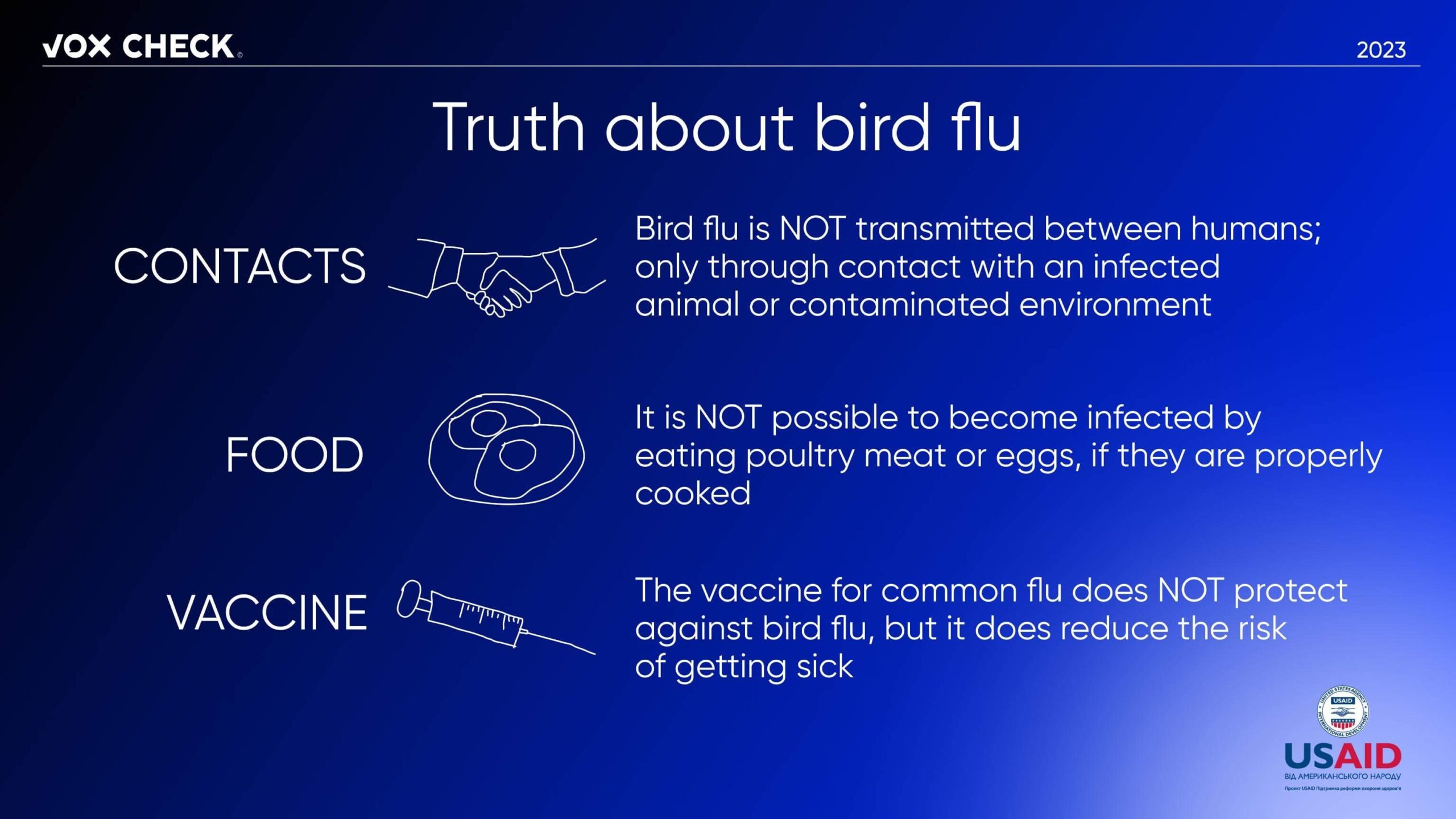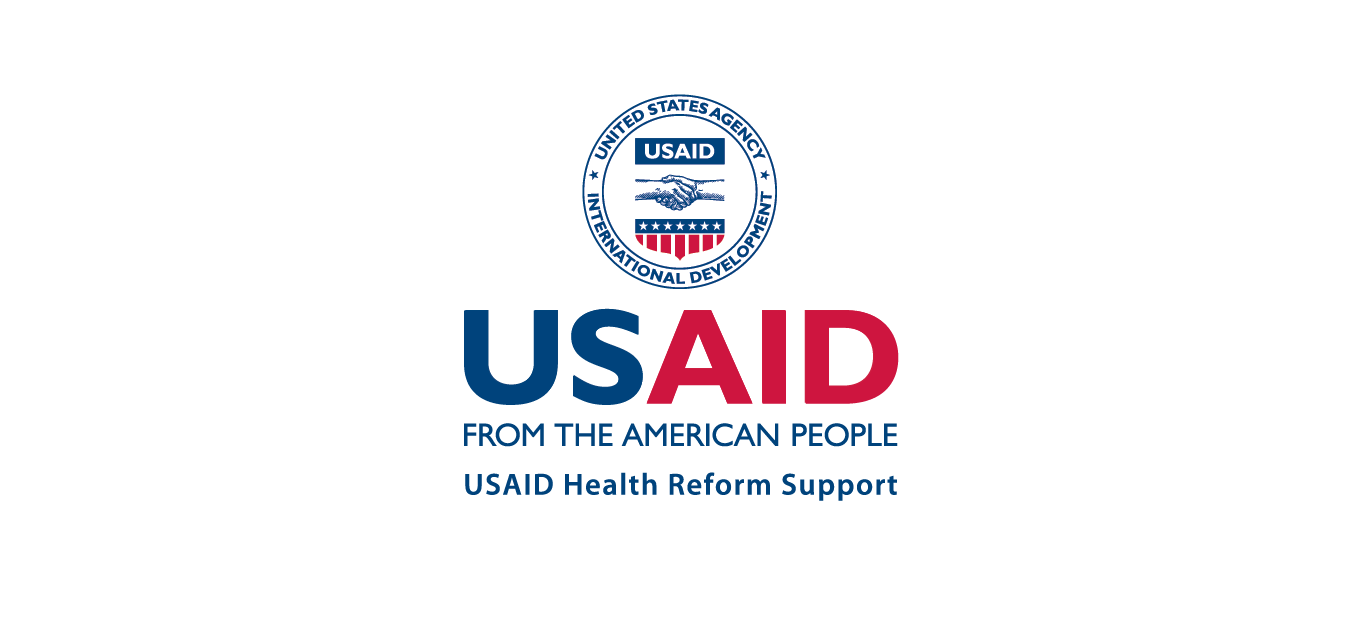Once again, propagandists are spreading lies that Americans and Ukrainians plan to infect Russians with diseases through migratory birds. Allegedly, in the border regions of Russia, they are preparing for the flight of birds infected with avian flu. Ebola and Marburg viruses are also mentioned as potential bioweapons.
With the support of the USAID Health Reform Support project, VoxCheck analyzes and refutes public health narratives spread in the information space of Ukraine, Belarus, and russia on a weekly basis.
A statement by Grigory Grigoryan is circulating on the internet, claiming that allegedly U.S. military virologists from Ukraine are planning to undermine the health of Russians. Allegedly, he receives signals from colleagues that in the border regions of Russia, they are preparing for the flight of birds carrying H5N1 – avian flu.
He also noted that “at least in Ukraine and Kazakhstan, Americans are working on this. Ukraine and Kazakhstan are countries with high intensity of migratory birds’ flights for wintering and in the reverse direction. That is, the avian flu pathogen was chosen because there is a mechanism for its global spread so that no one suspects. Work is also underway with the Ebola virus and the Marburg virus. The head of the World Health Organization even hinted unequivocally that the next pandemic could be caused by the Marburg virus. But after Russia’s prompt response to these threats and the development of a Russian vaccine against the Ebola virus, the bipartisan American biowarfare commission decided to change the vector from a virus to bacteria.“
What’s the reality?
Grigory Grigoryan is a former head of the food safety service in Armenia, dismissed in 2011. This is not the first time he has propagated Russian narratives about Ukraine. In particular, he claimed that the “preparation of biological sabotage” was one of the reasons for the start of the “operation to cleanse Ukraine of Nazism.” In previous issues, we debunked fakes about the work of “secret American biolabs” in Ukraine.
Accusations against Ukraine and the U.S. of preparing to infect Russians with avian flu are unfounded. As part of the Biological Threat Reduction Program, Ukrainian scientists collaborated with their American counterparts under the project “Assessment of selected especially dangerous pathogens potentially carried by migratory birds over Ukraine.” However, this project was implemented from January 31, 2018, to January 31, 2019.
The aim of the project was to conduct biosurveillance of migratory birds, focusing on the following objectives:
- Development of virus genome sequencing resources for a more in-depth scientific analysis of the dynamics of the risk of avian viruses and their carriers in Ukraine.
- Assessment of ecological, epizootic, and epidemiological risks of infectious diseases transmitted by migratory birds associated with the main migration routes in Ukraine.
Genome sequencing is one of the methods for virus diagnostics. Unlike PCR tests that determine the presence or absence of the virus in the human body by detecting its genetic material, genome sequencing not only detects the virus but also identifies specific variants and new (previously undescribed) gene changes in the virus. Additionally, this technology and equipment allow working with other pathogens (helminths, bacteria, viruses, etc.) at the genomic level. Sequencing is valuable for studying fundamental biological processes as well as for applied methods such as disease diagnostics and forensic medicine. There is no mention of the development of new virus forms or their spread in this context.
Avian influenza, commonly known as bird flu, is a widespread disease affecting wild birds and domestic poultry, caused by type A viruses. Some of these viruses can be transmitted from infected birds to humans. The viruses naturally circulate among wild coastal birds worldwide and can infect domestic poultry and other bird and animal species. Since migratory birds are the primary reservoir for influenza viruses, outbreaks in poultry farms usually occur during seasonal migrations of birds in spring and autumn.
The disease has serious consequences for societies worldwide and is part of the monitoring programs of the World Health Organization (WHO). Therefore, such research is a common global practice to counteract the spread of the virus in specific regions.
Sources: Public Health Center of the Ministry of Health of Ukraine, US Centers for Disease Control and Prevention
Regarding Ebola and Marburg viruses, the World Health Organization (WHO) does indeed state that these pathogens pose the greatest threat to public health due to their epidemic potential. Ebola and Marburg viruses cause severe infectious diseases that often have fatal consequences. Key symptoms include severe headaches, high fever (39–40°C), abdominal pain, diarrhea, and vomiting. Severe cases may involve bleeding and rashes. Direct contact with the blood and other body fluids of infected humans and animals, or indirect contact with contaminated surfaces and materials such as clothing, bedding, and medical equipment, is necessary for the transmission of these viruses.
As a result, if strict infection prevention measures and control measures are adhered to, the risk of infection is considered minimal. Vaccines against Marburg are currently being developed and undergoing clinical trials. Two vaccines for Ebola are licensed: Ervebo from the United States and the European two-dose vaccine — Zabdeno and Mvabea. Currently, outbreaks of Ebola and Marburg are only observed on the African continent, so Ukraine is not in a risk zone.
In 2014, the Ministry of Health of Ukraine appointed the Anti-Plague Institute in Odesa as the coordinator for the diagnosis of the Ebola virus. This means that this institution is capable of conducting laboratory diagnostics of the disease. In contrast, Russia often uses science for military purposes. For example, in 2018, the Head of the Permanent Delegation of Ukraine to the NATO Parliamentary Assembly, Iryna Friz, presented a report to partners on the research of Russian scientific research institutes in the development of biological and chemical weapons. “For at least the last three years, Russia has been researching hemorrhagic fever viruses, including Ebola and Marburg, presenting it as attempts to develop vaccines. In reality, it is a return to Soviet developments combining Ebola with the smallpox virus. This is confirmed by the analysis of more than five thousand positions of state procurement and scientific activities of several Russian institutions under the Ministry of Defense. At the same time, another research institution actively purchases and conducts research indicating the development of new toxic substances with properties of nerve-paralytic gases.“
This information piece was produced with the assistance of the United States Agency for International Development (USAID), provided on behalf of the people of the United States of America. This article’s content, which does not necessarily reflect the views of USAID, the United States Government, is the sole responsibility of Deloitte Consulting under contract #72012118C00001.
Attention
The author doesn`t work for, consult to, own shares in or receive funding from any company or organization that would benefit from this article, and have no relevant affiliations



